You might be wondering why your jade plant appears to be dying. Well, I am here to tell you some of the reasons why and offer to help you bring it back to life.
How can you save your dying jade plant? The answer is simple: Care—renewed care. If the problem was overwatering, take steps to dry out your jade plant. If it was root rot, prune out the dead roots. Understanding the problem helps us come up with solutions. Jade plants don’t just wither and die overnight. It takes time. Succulents like the jade plant are easy to propagate and grow. But you can easily overdo as well as neglect care for the jade plant, and it will result in your jade plant wilting and dying.
So, what is happening to your jade plant? Why is it dying? What can you do to fix this? Let me tell you some symptoms and some of the remedies to solve the problem.
Three symptoms might appear to tell you that your jade plant is dying:
1) Branches falling off.
2) Yellowing of the leaves.
3) Root rot.
Jade Plant Branches Falling Off
One of the most observable symptoms that show your jade plant dying is the falling off its branches. Mature jade plants have woody trunks and plump taut-looking leaves. Healthy plants shoot up their branches from the main trunks. They normally project upwards and slightly outward.
If your jade plant extends too widely and its branches appear to be hardly able to carry the weight of its leaves, it may be a symptom of a problem. If its branches are stooping downward and bowing to the ground, that may also be a symptom of a problem. If young leaves fall off untimely, it may be a symptom.
Losing Leaves
Some of these plants may suffer from leaf loss due to inadequate care or environmental changes. It is important to identify the cause of the problem in order to restore health and vitality to the jade plant.
One possible reason for leaves falling off from a jade plant could be insufficient light exposure. Jade plants need bright indirect sunlight throughout most of their growing season, with at least four hours per day being ideal. If there isn’t enough light, it can lead to weak shoots that produce fewer leaves and eventually wither away. To address this issue, move your jade plant closer to a window or invest in artificial lighting such as grow lights if necessary.
Another possible cause of leaf drop on a jade plant may be overwatering. Too much moisture will drown out oxygen needed by the roots, which can result in yellowed leaves dropping off prematurely. When watering your jade plant make sure you wait until the soil has completely dried before adding more water; then only add as much as is needed so that excess drains out of the container’s bottom holes without pooling up around them.
Yellowing Of The Leaves
Another obvious symptom that your jade plant is dying is the yellowing of its leaves. Though this is also a symptom of general neglect, yellowing doesn’t happen overnight. It is a clear symptom that your jade plant is dying.
There is a natural yellowing of leaves that is not a real problem. Older leaves are naturally yellow because of maturity or disease. In this case, all you have to do is to prune the yellowing leaves out.
We are concerned about the general appearance of your jade plant, whose leaves are all turning yellow in various stages. When young leaves turn yellow, this is a symptom that your jade plant is dying.
This is sometimes accompanied by the leaves turning soft. Jade plants leave, like all other succulent plants, feel firm and taut to the touch. Its leaves are not soggy though it is water-filled. When the leaves become soft and squishy and break with slight finger pressure, it is a sign that the plant is dying.
Root Rot
A third symptom is root rot. This is not the most obvious symptom because root rot manifests under the soil. You need to remove the plant from the pot, shake off the soil, and examine its root system more closely to see if your jade plant is suffering from root rot.
However, if you have been seeing a general yellowing of the leaves or a breaking off and weakening of leaves and branches, it is high time to check your jade plant’s roots to see if it is experiencing a rotting of roots (not all, but some).
How To Revive An Overwatered Jade Plant
Succulents, as you may know, are water-filled plants. They thrive in arid climates and dry soil conditions. The cactus is a type of succulent plant. This is the reason they are very susceptible to overwatering.
Under normal conditions, you only need to water your jade plant every few weeks. They don’t normally dry up or wilt with little (neglect) watering under cool or normal temperatures. This may be the reason why your jade plant appears to be dying. You may overwater your jade plant. The symptoms of over-watering are often similar to the symptoms of too little watering.
One of the symptoms of overwatering a jade plant is the yellowing of the leaves. Yes, the yellowing of leaves is indeed a symptom of too little watering. However, you cannot dismiss this symptom simply as your jade plant getting too little water.
Because if you do that, you will water your jade plant more, thinking it will solve the problem. But it will not. What you just did is worsen the problem.
The best thing to do if you see yellowing of the leaves is to check the soil — Is the soil dry or wet? If the symptom is a result of overwatering, the soil will be wet or soaked. Either the jade plant is being too frequently watered under cool climate conditions, or the pot has poor drainage leaving the soil wet.
If the soil is dry to the touch, the jade plant is getting too little water, especially if the climate is hot and dry. A little water will do the job. You can revive overwatered jade plants. They can recover. However, you must be careful.
First, check the pot’s drainage. Make sure that your pots have enough holes for good drainage. If your pot has a drain tray, empty it regularly. This helps prevent overwatering. Feel the soil. If soaked, remove the jade plant from the pot and gently shake off the soil clinging to the roots. (This is also the best time to check for root rot. More on that below.)
After you have made sure that any rotting roots have been pruned off, repot your jade plant. Jade plants need only a limited amount of space for their roots, just enough allowance for the root ball to be contained. Repot the jade plant in a suitable pot.
Do not water your jade plant on the first day or a couple of days. But be careful to check that the soil doesn’t dry up. This results in a healthy (revived) plant.
Soil characteristics can also cause overwatering. If the soil you used to plant your jade plant has poor draining characteristics, it may keep the roots soaked.
This condition encourages root rot. You need potting soil suited for the particular needs of your jade plant, one with good draining qualities. Putting small pebbles at the bottom of the pot helps drain water.
Coarse sand mixes your soil with crushed walnut, or pecan shells helps loosen up the soil medium for easy drainage where your jade plant takes root. It is important to keep the jade plant’s root moist and watered but not soaked.
Your jade plant may also suffer from root rot as a result of overwatering. When you have removed the plant from the pot and shaken the soil, check for root rot. Root rot appears brown, dark, and dead. Train your eye on the larger tap roots.
You can see this brown deceased growth if you cut off an end of a root; see how far the root rot goes. Cut slowly up the root until you see some healthy white root material exposed and all the brown material has been pruned off. Make sure you are using clean and sterilized pruning shears to avoid contaminating the root’s inner material.
Root rot often manifests on the plant through dropping leaves or falling branches. Root rot weakens the connections that attach the leaves to the branches and the branches to the trunk. The connections do not receive sufficient nourishment from its roots because it has rotted.
But if the branches appear stooping, it is not always a result of root rot. It can be because the pot is too large for your jade plant. This results in roots being too overspread and loose under the soil.
It can also be because you do not regularly prune your jade plant and allow it to grow wildly without grooming. Its branches become top-heavy with too many leaves making the branches stoop for sheer weight.
How To Prune A Jade Plant
Pruning is the nature of grooming plants. If you don’t prune, its branches and leaves will grow wild. Prune the lowest leaves first. They are the oldest and more mature ones. They will be the ones to fall off first anyway if you leave them. New growth appears at the top and on the ends of the branches.
Prune long leggy branches off completely. These are the branches that will droop in time. You want a jade plant that appears tight and upright, and pruning off scrawny sagging branches helps you attain that.
There may be times when your jade plant has matured into a woody trunk and woody branches that you can prune off all new growth leaving a bare trunk and bare branches. You can do this for the plant to renew itself. But it would be best if you had expert advice on this.
Your jade plant really needs little care. It thrives on a little neglect. But with too much neglect, your jade plant will die. I hope you won’t be needing this article again in the future.
If you want to take good care of your jade plant, you can get this book as there is much useful information you can get in the book.
Read as well:
Did you find this post useful? Would you like to get back to it later? Save THIS PIN below to your gardening, herb garden, or house plant board on Pinterest! Thanks 🙂


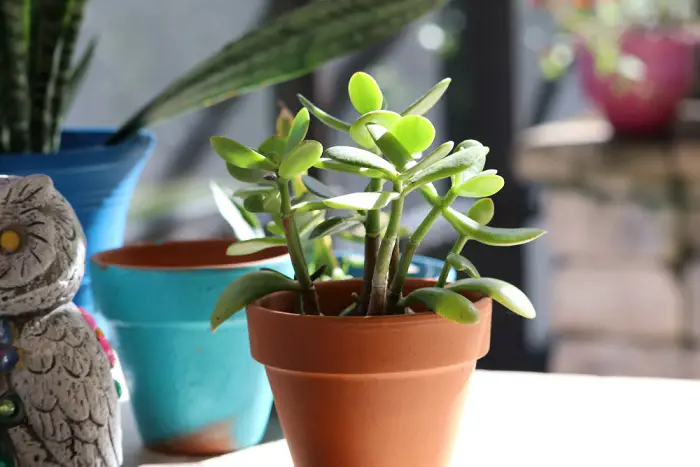
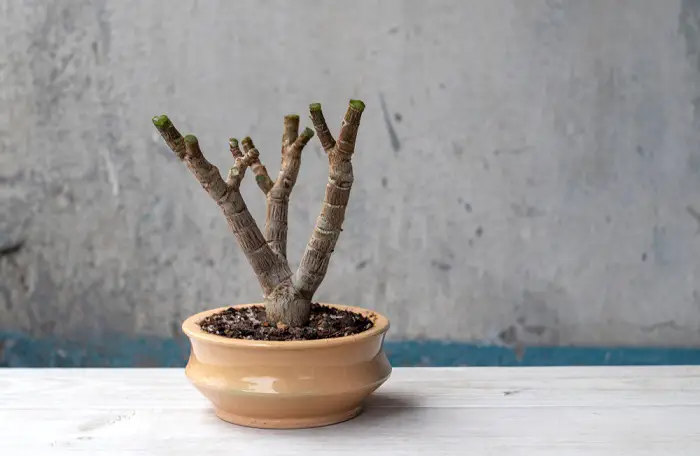
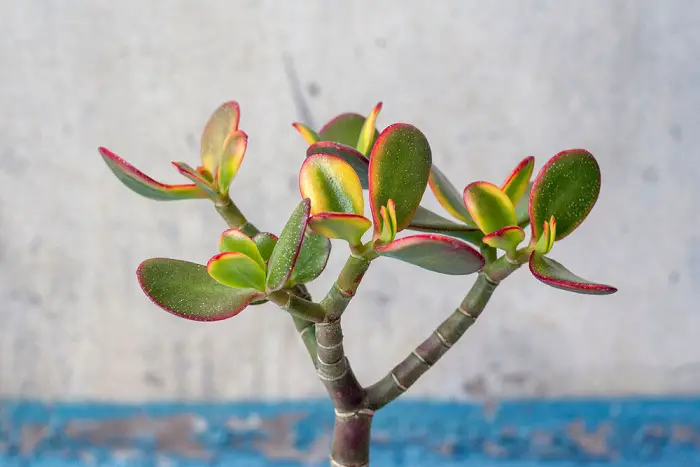
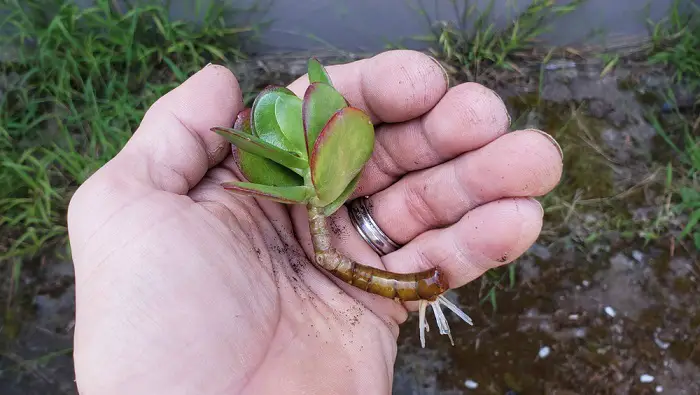
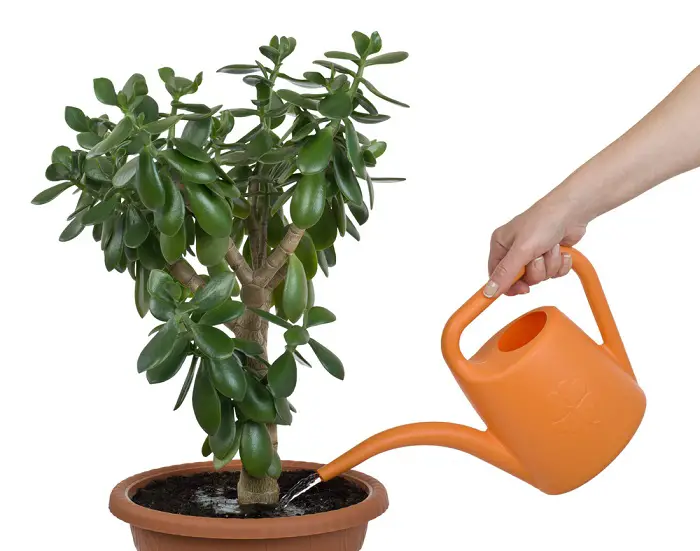
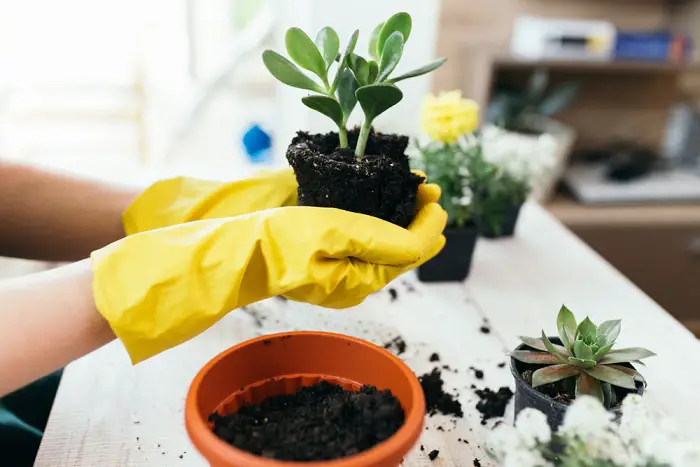
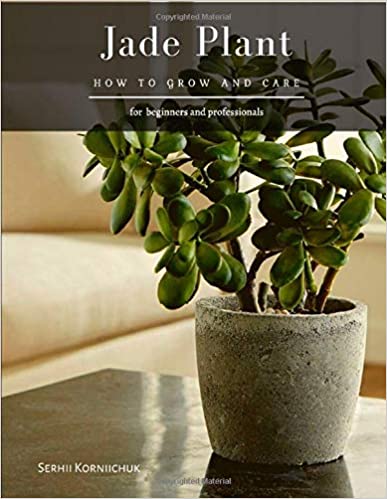

Hi. So recently my father passed away and when i went to his home to pack his belongings. I looked for his jade plant. His pride and joy. This jade survived 4 moves and is well over 30+ yrs old. Well my discovery of it was not what I expected. It was covered in dust, laying on its side and dying. I actually have a branch of it that broke during a move 8yrs ago that is thriving. So I immediately water it and washed the dust off. I was able to carefully get it home and repotted it since it was laying on it side and had root rot. And I did clean off the rot before replanting it. I have to save this plant. Please, any advise will be greatly appreciated. Please help me save this part of my family’s history. Thank you.
Hi, my condolences for the loss of your father. The saving process has been stated in the post. You may follow suit. If this still no help, you may get someone who is nearby and has experience with jade plants to help you out.
Your picture of a jade plant with reddish tinged leaves was not a dying plant at all, but a healthy plant atthe end of the summer, getting ready to bloom!
What should I do if my jade plant has basically no roots at all? Should I try to re plant it in soil or put in just water until roots develop?
You can try to take off the leaves and plant in the soil. Try to tuck the edge into the mix so that it can grow from the base.
I have a huge jade *tree* that I didn’t bring inside soon enough when it started to get cold here in MI. The leaves are slowly falling off-some are just spotted and others just shriveled up brown and crispy. The branches are 1-3 inches in diameter-it is quite mature. Would pruning back some of the branches help revive it? I’m not sure how to do that since they are so thick. Help!
You may try to prune the root but try not to trim more than one-third of the root system. Then repot it in nutrient-rich soil that is mixed with an equal amount of organic compost. Make sure the bottom of the pot is well-drained.
Place the pot of your jade plant in a warm spot where it can get partially shaded sunlight for about 6 hours a day. Hopefully this can help to save your dying plant.